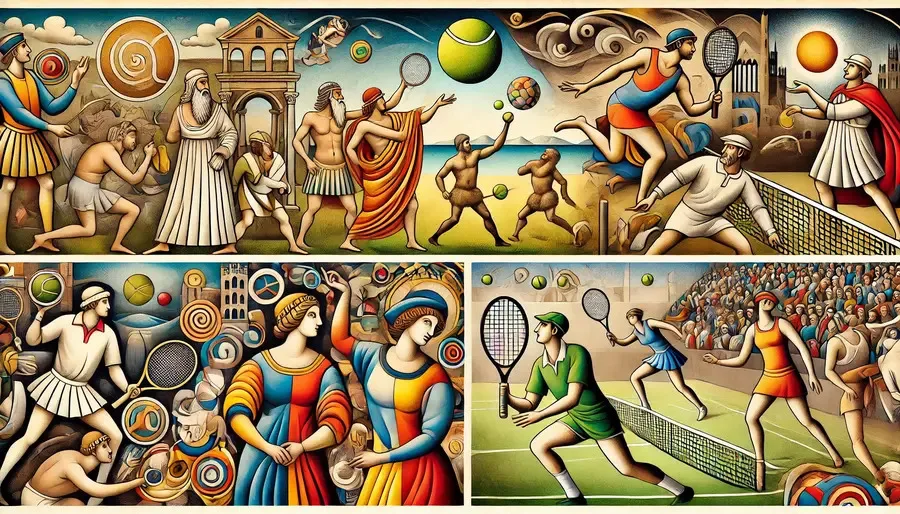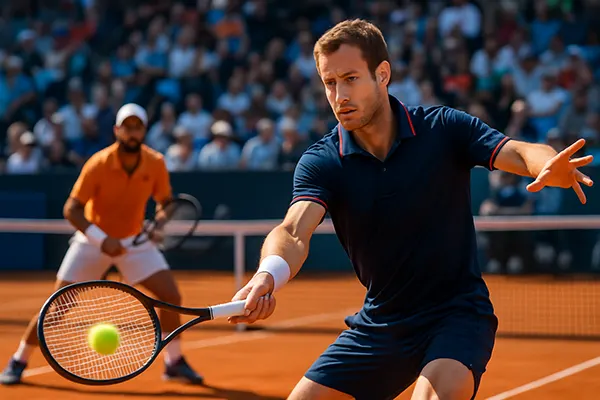Tennis is a sport with a rich history that spans several centuries. From its origins in ancient civilizations to its current status as a global phenomenon, tennis has evolved remarkably, shaping and being shaped by the cultures in which it has been played. This article delves into the fascinating journey of tennis, exploring its ancient roots, development through the Middle Ages, the birth of modern tennis, the evolution of its equipment, and its modern era.
The Origins of Tennis
The origins of tennis can be traced back to ancient civilizations where ball games were common. The Greeks, Romans, and Egyptians all had variations of ball games that involved striking a ball with a hand or a bat-like instrument. These early forms of the game laid the groundwork for what would eventually become tennis.
Development of Tennis in the Middle Ages
The game of tennis began to take a more recognizable shape during the Middle Ages. In France, a game called “jeu de paume” (game of the palm) was played in monasteries. Players struck the ball with their hands, and the game was often played indoors. This game gradually evolved, with players starting to use gloves and, eventually, bats to hit the ball. By the 16th century, rackets were introduced, and the game began to be known as “tennis,” derived from the French word “tenez,” meaning “hold” or “take,” which players would shout as they served the ball.
Birth of Modern Tennis
The modern version of tennis as we know it today was developed in the late 19th century. In 1873, Major Walter Clopton Wingfield introduced a game called “Sphairistikè” (Greek for “playing ball”) to Victorian society. This game, played on an hourglass-shaped court, closely resembled modern tennis and quickly gained popularity. The All England Croquet Club held the first Wimbledon tournament in 1877, which marked the official establishment of lawn tennis. The rules were standardized, and the game spread rapidly across Europe and the United States.

Evolution of Tennis Equipment
Tennis equipment has undergone significant changes since its inception. In the early days, players used simple wooden rackets with small heads and tight strings made from animal gut. As the game evolved, so did the equipment. By the mid-20th century, steel and aluminum rackets became common, offering greater durability and power. The 1980s saw the advent of graphite and composite materials, which revolutionized racket design by providing a combination of strength, lightness, and flexibility. Modern rackets are engineered for precision and power, incorporating advanced technologies to enhance player performance.
Similarly, tennis balls have evolved from hand-sewn cloth-covered balls filled with sawdust or wool to the pressurized rubber balls we use today. The introduction of synthetic materials has improved the consistency and durability of tennis balls, making them more suitable for various playing surfaces.
The Modern Era of Tennis
In the contemporary era, tennis has become a global sport with a massive following. The four Grand Slam tournaments – the Australian Open, French Open, Wimbledon, and the US Open – are the pinnacle of the sport, attracting the world’s best players and millions of fans. Advances in technology, such as Hawk-Eye for line calls and sophisticated training and fitness programs, have pushed the boundaries of the sport.
Professional players today enjoy unprecedented levels of athleticism, strategy, and skill. Legends like Roger Federer, Serena Williams, Rafael Nadal, and Novak Djokovic have captivated audiences with their extraordinary performances, setting new standards and records. The sport continues to grow, with initiatives to promote tennis at the grassroots level and make it more accessible to people of all ages and backgrounds.
Tennis has a storied history that reflects broader social and technological changes over time. From its ancient origins to its current status as a leading global sport, tennis has continually evolved, captivating and inspiring generations of players and fans alike. As we look to the future, the sport’s rich heritage and ongoing innovations promise to keep tennis exciting and relevant for years to come.




